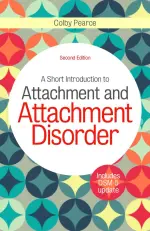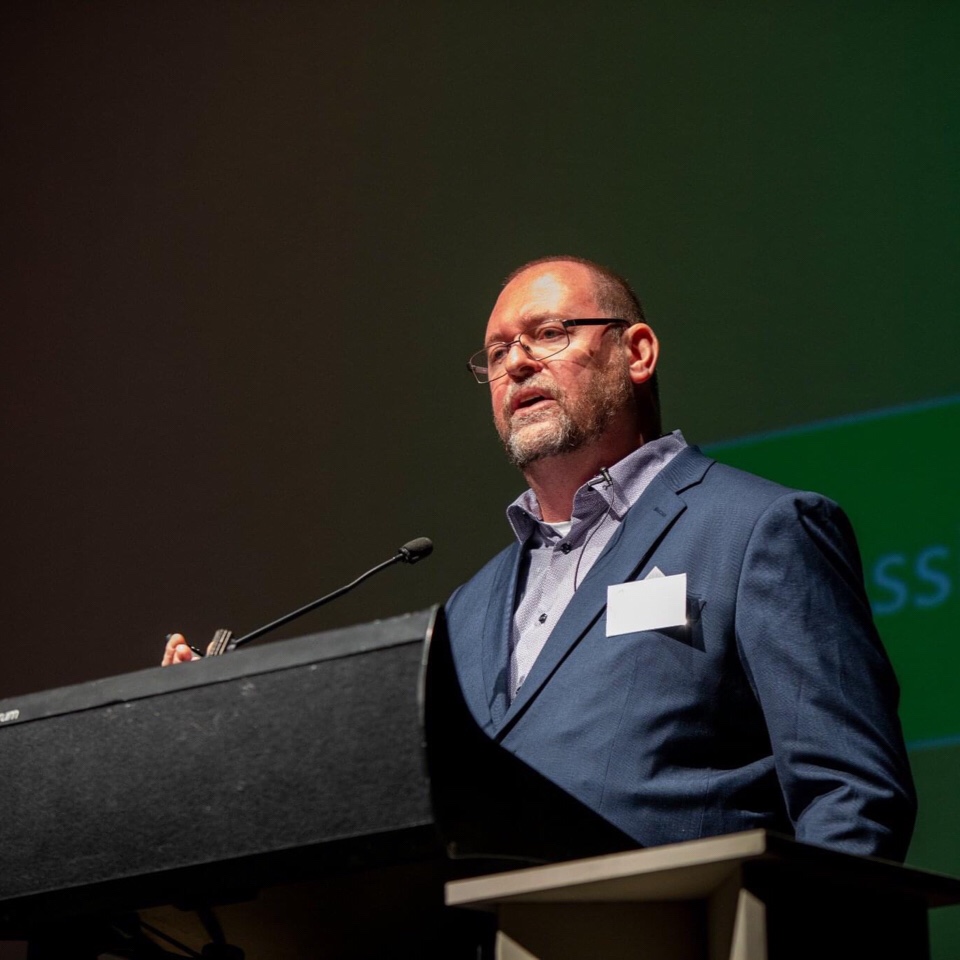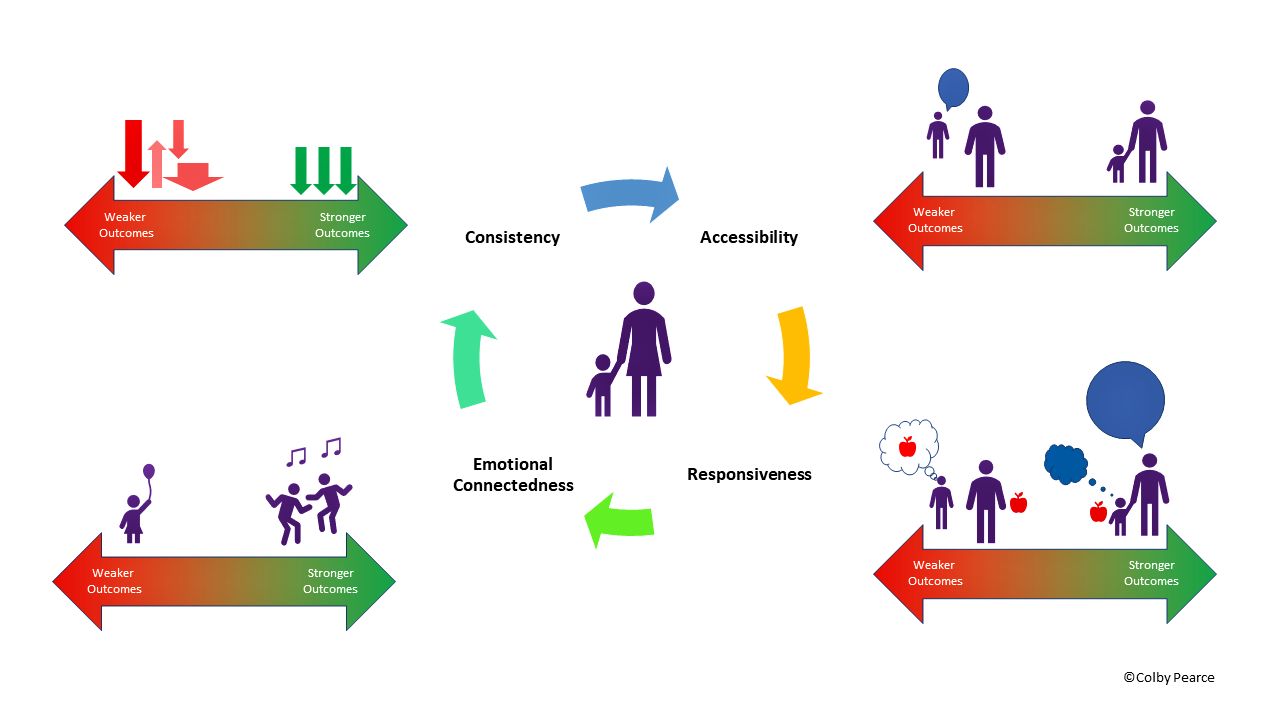In the first blog of this series about child welfare intervention outcomes, I wrote about the importance of knowing, and being able to say, what progress toward successful outcomes looks like. In this second blog of the series, I will talk about what attachment security looks like.
Before I get into it, I want to make the point that I am not talking about the reduction in a behaviour or behaviours of concern, or symptom reduction. This is still ‘problem-focused’, with the same associated difficulties as I highlighted in the first blog. Rather, I am taking about what progress towards recovery looks like for children and young people who are recovering from a tough start to life.
In the first blog in this series I referred to the Triple-A Model (Pearce, 2016, 2012, 2011, 2010), which I use as an explanatory framework for understanding the impact of early relational trauma on the developing person. The Triple-A Model refers to Attachment, Arousal, and Accessibility to Needs Provision. These constructs also help us to reflect about and identify what progress towards recovery from early relational trauma looks like. In this article I am going to refer to the first construct, attachment, and what progress towards attachment security looks like.
Early relational trauma negatively impacts attachment security in the developing child and, in turn, their approach to life and relationships. This is, perhaps, best represented in the internal working models, or attachment representations, that develop in the context of our early attachment experiences. These take the form of beliefs that, mostly subconsciously, influence our approach to life and relationships. They are the beliefs that are held about ourselves, others, and the world in which we live.
Among children and young people who have experienced early relational trauma, the attachment representations that influence their approach to life and relationships are predominantly negative. They believe themselves to be bad, unlovable, unworthy and incompetent; they believe adults in a caregiving role to be unresponsive, uncaring, and unsafe; and they believe that the world in which they live is a harsh and dangerous place. They approach life and relationships under the influence of these beliefs, and this is reflected in their behaviour. That is, their behaviour reflects their inner world and the beliefs they hold about themselves, others, and their world.
In contrast, children who were raised in safe and nurturing homes predominantly approach life and relationships under the influence of secure attachment representations. They believe themselves to be good, worthy and capable; adults in a caregiving role to be accessible, responsive, and safe; and they believe their world to be safe and full of opportunities. Their behaviour is largely consistent with these beliefs.
In consideration of the above, when intervening to promote recovery from early relational trauma, we need to turn our mind to what needs to happen to strengthen the influence of secure attachment representations over the young person’s approach to life and relationships. As their behaviour reflects their inner world and attachment beliefs, we need to know what behaviour that is under the influence of secure attachment representations looks like.
In my work with children recovering from a tough start to life, the first thing I look for is that they are making some effort in relation to their appearance. Self-care reflects self care. I also look for natural interest in engagement with me and comfort in separating from primary caregivers. I look for positive and realistic self-appraisals and acceptance of praise. I look for awareness of the experience of others and regulation in consideration of others. I look for a transition from behavioural expression to verbal expression about their needs and experiences. I look for preparedness to try new things and tolerance of frustration and failure. I look for emerging interests and participation in related pursuits. I look for persistence in their endeavours born out of a natural desire to be successful. I look for interactions with me that reflect my role and endeavours with them. I look for choices and actions that reflect a positive sense of their worth. I look for anticipation of a career, of enduring relationships, and of a family of their own.
In addition, I am keen to hear about the following aspects of the child’s approach to life and relationships, and I encourage adults who care for or have a caring concern for these children and young people to look for them too:
- Care about appearance
- Realistic self-image
- Consideration of others
- Giving things a go
- Confident exploration
- Joining in
- (Appropriate) independence
- Readily soothed or comforted by adult caregivers
- Seeking help when needed
- Having fun
- Making friends
- Accepting challenges
- Using words to communicate
- Empathy
- Hopefulness
- Dreams and aspirations
- Standing up for themself
There are other signs of progress towards recovery from early relational trauma, but these also reflect well-modulated arousal and functional learning about accessibility to needs provision, so I will include these in the next two articles in this series.
For a more detailed representation of my knowledge and work with children and young people recovering from a tough start to life I would be pleased if you would access A Short Introduction to Attachment and Attachment Disorder (Second Edition).
References:
Pearce, C.M. (2016) A Short Introduction to Attachment and Attachment Disorder (Second Edition). London, Jessica Kingsley Publishers
Pearce, C.M (2012). Repairing Attachments. BACP Children and Young People, December, 28-32
Pearce, C.M. (2011). A Short Introduction to Promoting Resilience in Children. London, Jessica Kingsley Publishers
Pearce, C.M. (2010). An Integration of Theory, Science and Reflective Clinical Practice in the Care and Management of Attachment-Disordered Children – A Triple A Approach. Educational and Child Psychology (Special Issue on Attachment), 27 (3): 73-86
Pearce, C.M. (2009) A Short Introduction to Attachment and Attachment Disorder. London, Jessica Kingsley Publishers













Pingback: Outcomes in child welfare: What a well-modulated nervous system looks like | Attachment and Resilience
Pingback: Child welfare intervention outcomes: what does trust in the accessibility and responsiveness of adults look like? | Attachment and Resilience